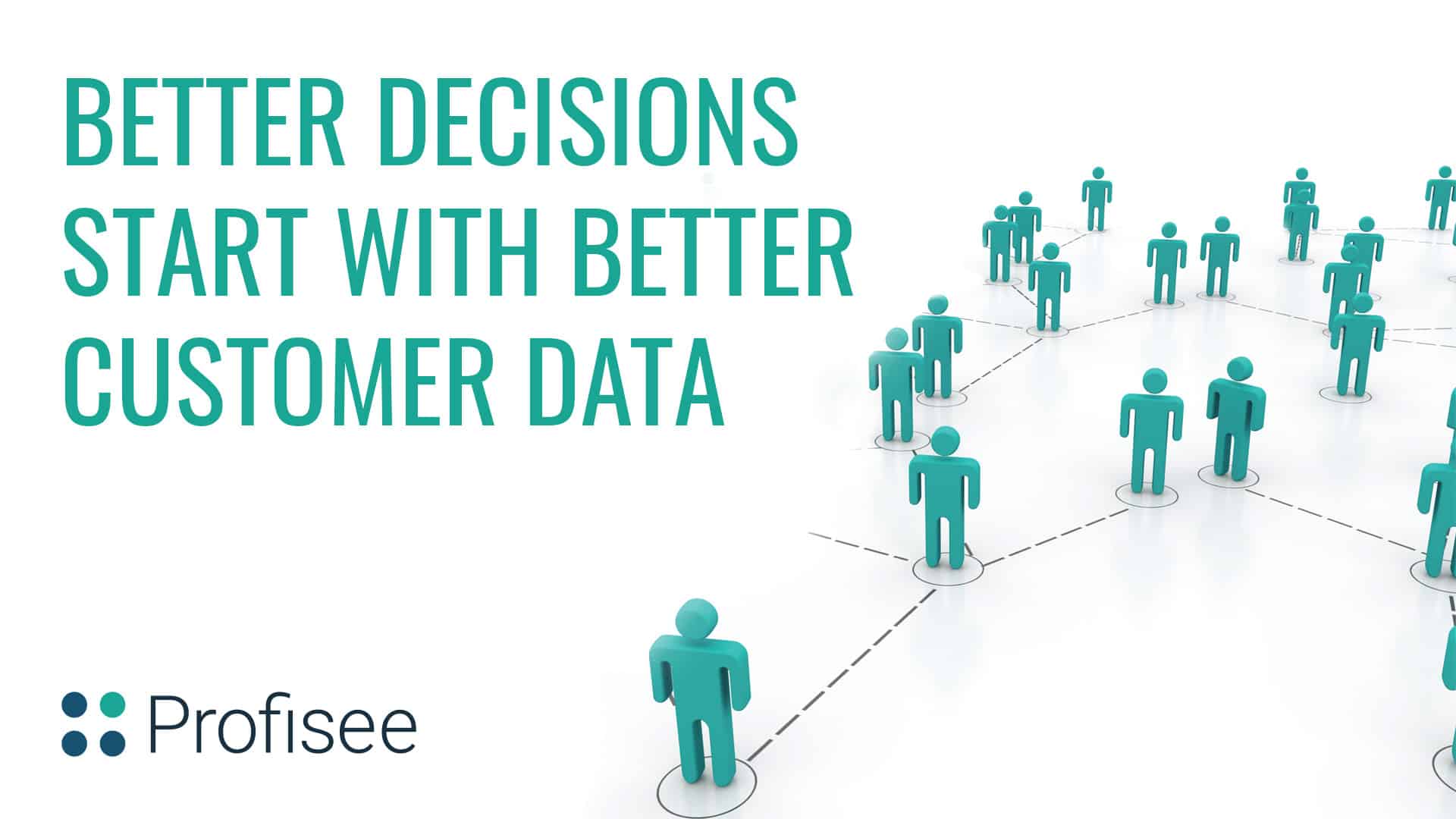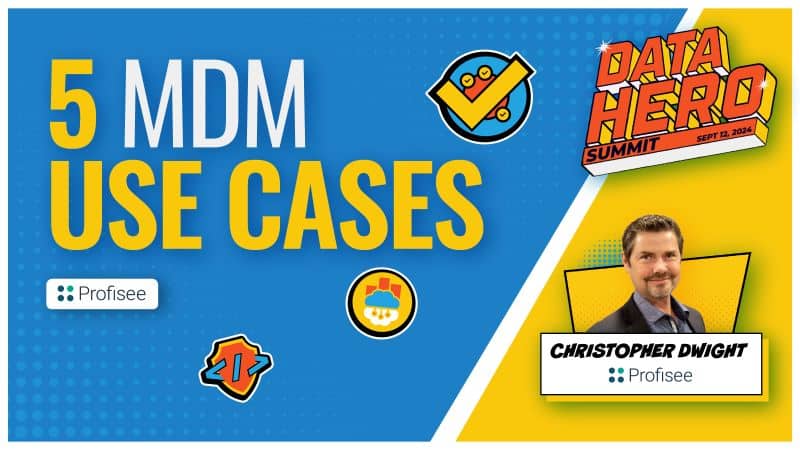Companies rely on their data to answer difficult questions about any and all of their essential business entities for analytics purposes. But it’s a hit and miss game when businesses lack an accurate and semantically consistent data driven strategy for all domains across the organization. In this article, let’s focus on the customers and the best strategy for effective customer data management.
Everyone gets that customers drive revenue but what about the specific insights that can highlight where to focus next? Want to know the top 10 products by customer sales to determine whether there’s enough inventory in place to meet expected demand? Or find which duplicate customers exist in different systems following an acquisition so that they’re not bombarded with multiple marketing emails? How about identifying buyers that are prime cross-sell candidates because of past purchases? Or being prepared to shuffle staff in a particular region so that personnel are where they’re needed when they’re needed to serve the customer best?
It will be no easy task to quickly and cost-effectively deal with these and other issues unless data managers have recommended a data driven strategy with a master data management (MDM) solution and the business has agreed to implement it.
Calculating the Customer Experience
A particularly popular use case that calls for customer data management in your data driven strategy revolves around delivering a great customer experience (CX) to B2C and B2B buyers. By using clean master data to precisely identify individual customers with the highest lifetime value to the business, tracking their history across corporate business lines and in conjunction with transactional data, there’s an opportunity to analyze what might further improve the quality of their interactions with the company.
Having an accurate representation of these customers and related entities all through the lines of business and applications – individual or organizational names, product spend, channel and location buying patterns, contractual parameters and so on – is key to ferreting out individual higher lifetime value customers and optimizing relationships with and experiences for them. Perhaps premier business clients would appreciate perks like preferential bulk discount terms, for example, while top retail shoppers would enjoy having benefits such as early online or in-person access to holiday sales deals for the brands they love.
That can increase their loyalty to the company, which is a big plus when you consider that on average it costs five times as much to attract a new customer than it does to keep an existing one.
Protip: Harnessing quality data to pinpoint individual lower-value customers also can be helpful, as analysis may surface ways to increase revenue from them.
Master the Mission
Here are a few ideas about how data managers in coordination with the business can succeed in creating a data driven strategy for answering critical business questions about the customer more quickly and less expensively than is possible when there is a master data disconnect. We’ll use the customer experience issue as an example of steps to take:
- Connect the customer dots. Customer information – who they are, what they’ve bought, which company location services them, etc. – probably exists in multiple systems, both in the data center and in the cloud. There may well be discrepancies in how personal or corporate names are represented in each one, for instance. What’s needed is a holistic, trustworthy and 360-degree view of each customer – a Customer Master – or there will be no core foundation for business analytics.
- Make a Customer Master Match. Here’s where transactional data – sales, deliveries, invoices and other interactions – enters the picture. Joining this data with the Customer Master makes it possible to calculate the total value of an individual customer. Being able to isolate a customer’s unique identity and link it to the buyer’s entire ordering history puts analysis into action.
- Call on a smart master data management (MDM) solution. Speeding the discovery of individual higher lifetime value clients vs. those with lower lifetime values requires that the MDM solution offer key features, including:
- Verification, matching and parsing functionality to uniquely identify each customer and tie together their identities across all systems.
- The ability to manage multi-domain master data for a comprehensive and true view of entities and their multiple connections, such as those between customers and the products purchased by them.
- Support for engaging the business with data management, thereby resolving inconsistencies among data definitions and consistently maintaining entities. It’s easier for business owners in each domain to steward master data and share reference data across domains when they all can use the same interface and common workflows. It then will be a more efficient process to segment customers and get enhanced CX initiatives up and running according to defined business rules and best practices.
- High scalability to support the needs of businesses that have hundreds, thousands or even more customers – or that expect to significantly increase their customer reach.
With the right MDM platform generating a single version of master data truth, the company will be able to implement a customer data management strategy and take its customer experience strategies to the next level – as well as handle any other difficult questions that are critical to honing important business operations.

Forrest Brown
Forrest Brown is the Content Marketing Manager at Profisee and has been writing about B2B tech for eight years, spanning software categories like project management, enterprise resource planning (ERP) and now master data management (MDM). When he's not at work, Forrest enjoys playing music, writing and exploring the Atlanta food scene.











